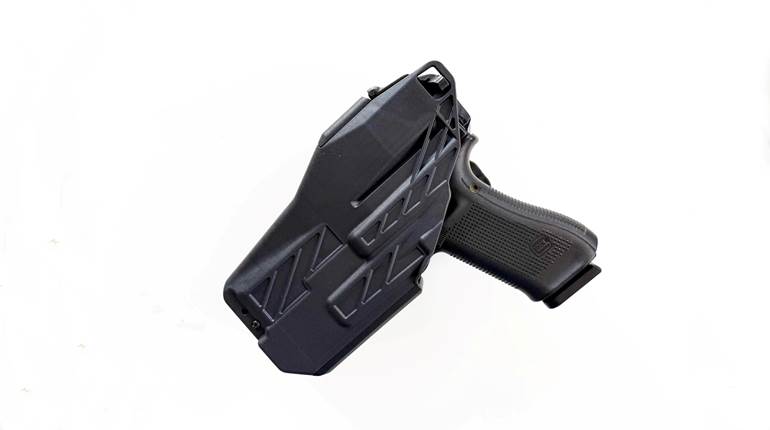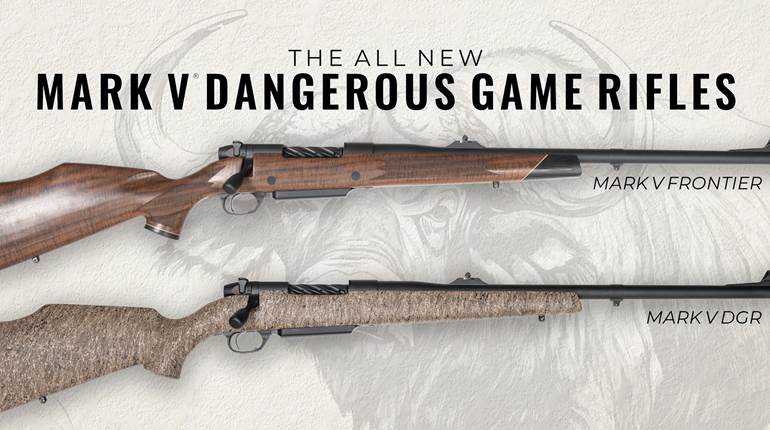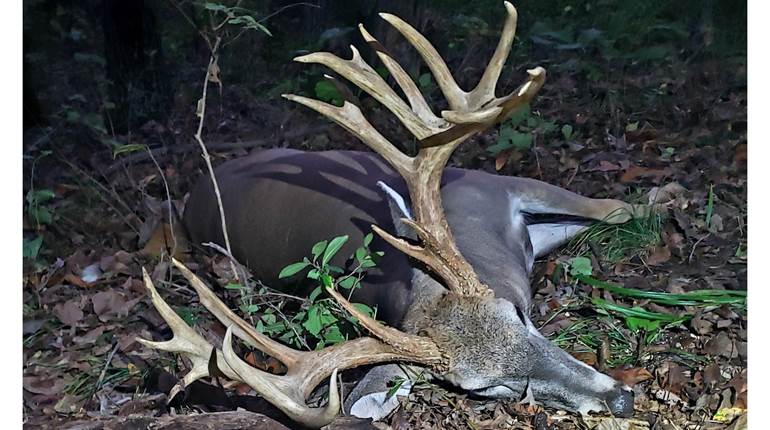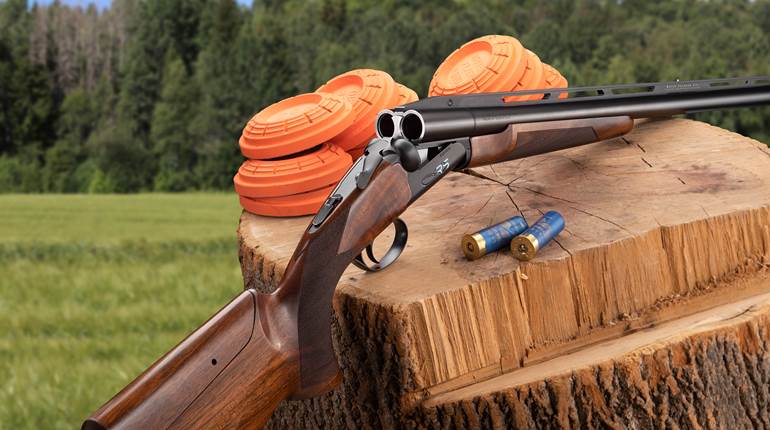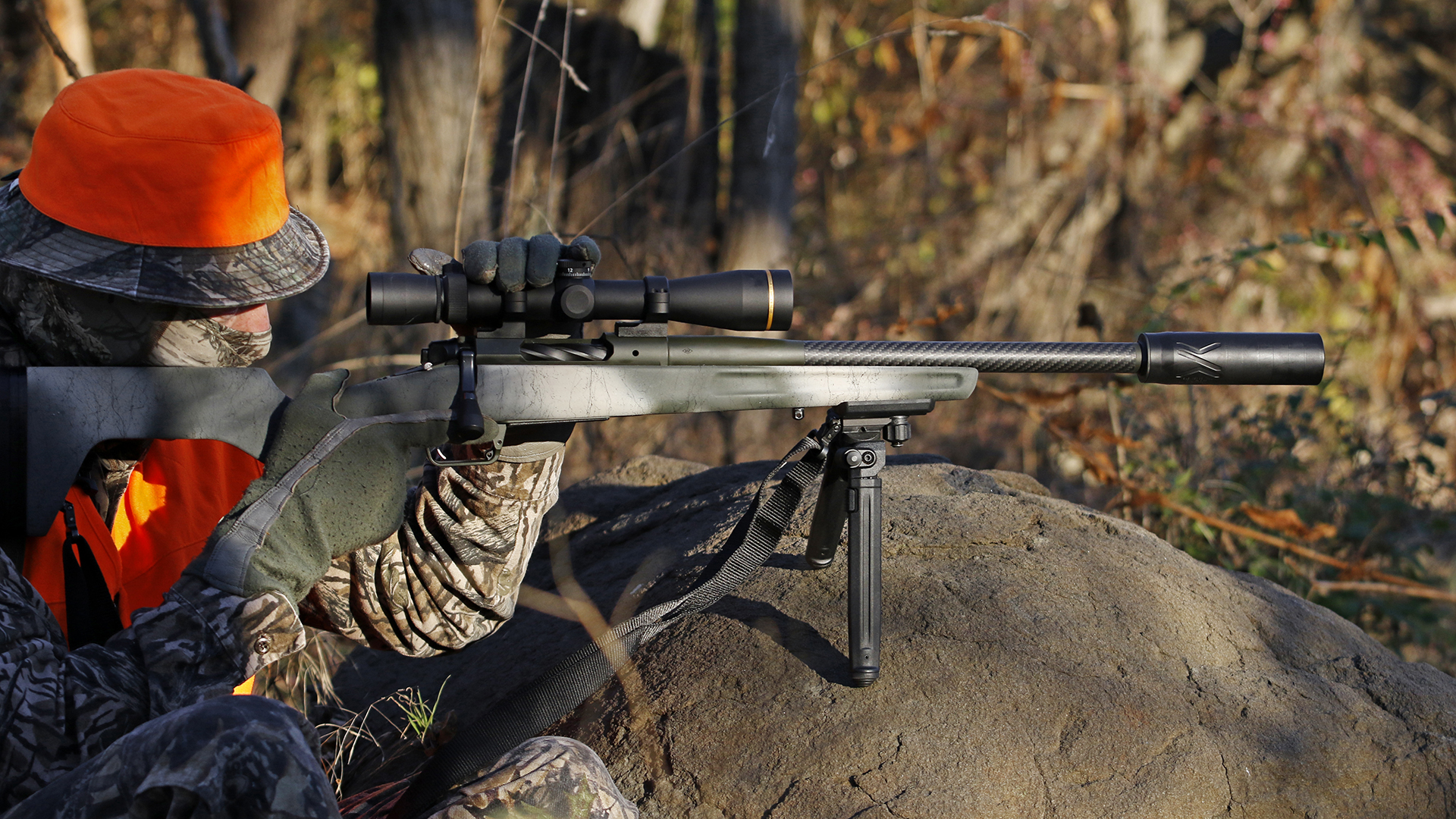
Maybe money can’t buy you love, but it can buy you accuracy. While there’s no substitute for the skill of the person pulling the trigger or a shortcut to gaining the experience that you need to put bullets down range accurately, having the right equipment goes a long way to achieving those tight groups. Over the past decade, not only has the equipment required for accurate shooting gotten more affordable, you can often find them on the shelf at your local gun shop. Here is a guide for what you need for out-of-the box precision shooting.
 High-quality and affordable rifles, optics and ammunition are available off the shelf.
High-quality and affordable rifles, optics and ammunition are available off the shelf.
The Rifle
Gone are the days when an exceptionally accurate rifle coming off the factory assembly line was the exception and not the rule. There was a time when a military rifle that just happened to shoot tight groups would get set aside to be transformed into a sniper rifle, or when all the stars aligned for a commercial rifle, the factory would earmark it to be sold at a premium. Modern manufacturing techniques mean that almost all factory rifles are more accurate than the average shooter ever needs, especially for 300-yard and under hunting scenarios. For a sub-$500 MSRP, even budget bolt-action/optics combos can often put out near m.o.a. three-shot groups with premium ammunition. But the more accurate a rifle, less is being left to chance when making that hunting shot.
A precise shooting rifle starts with a precisely made components. As anyone who has ever splurged for a pair of handmade boots can tell you, handmade is just…handmade. Nothing can match the fine motor skills honed by a master gunsmith over decades, but modern manufacturing techniques can yield very good results. Over the past 10 years, many manufacturers have jumped into the precision rifle world. Among them is Springfield Armory. While Springfield has a reputation for making accurate firearms, especially the match-grade M1911s and M1As that come out of the company's custom shop, in 2020, it introduced an off-the-shelf precision rifle designed for hunters with the 2020 Waypoint.
 The Redline is Springfield's lightweight and compact backcountry version of its 2020 Waypoint precision hunting rifles. Image courtesy of Springfield Armory.
The Redline is Springfield's lightweight and compact backcountry version of its 2020 Waypoint precision hunting rifles. Image courtesy of Springfield Armory.
While these long-range rifles caught my eye, the mountainous Eastern woodlands where I primarily do my hunting calls for a lighter and more compact rifle for all-day trekking. Then in 2023, Springfield announced the Redline version of the 2020. Stocked in the ultralight Grayboe Trekker with a carbon-fiber wrapped barrel standard, the Redline is a rifle designed for the mobile hunter. The combination of light weight and high accuracy intrigued me, so I decided to use the Redline as the central component in a “turnkey precision” project that explores the accuracy potential of products available in your local gun shop.
Like the Waypoint, the Redline is based around Springfield’s 2020 Model 700 footprint bolt-action. To this the company attaches premium components in the form of a TriggerTech trigger unit and BSF Barrels carbon-wrapped 16” barrel, placing the barreled action into a minimalist Grayboe Trekker stock. The rifle uses AICS-pattern detachable box magazines and a flush-fitting, three-round version made by MDT is supplied with the rifle.
 The Redline's TriggerTech trigger unit is user-adjustable.
The Redline's TriggerTech trigger unit is user-adjustable.
 The Redline uses AICS-pattern magazines. A three-round, flush-fit box is supplied with the rifle (right), but it also accepts the five-round magazine of the Waypoint (left).
The Redline uses AICS-pattern magazines. A three-round, flush-fit box is supplied with the rifle (right), but it also accepts the five-round magazine of the Waypoint (left).
 The hollowed out rear section of the Grayboe Trekker stock saves weight while maintaining rigidity.
The hollowed out rear section of the Grayboe Trekker stock saves weight while maintaining rigidity.
Hunters have learned what AR-15 owners have known for some time. If you’re planning to hang a bunch of optics and accessories on a rifle, you had better start off with a light one. A lightweight rifle was once the result of an alchemist-like gunsmith who could source and work with exotic materials and knew exactly where you could Swiss-cheese an existing rifle action and stock to achieve weight-savings, all for a premium price. Modern manufacturing and once-exotic materials that are now commonly available makes svelte more affordable. The bare Redline is 6 lbs. and the rifle with scope, sling, suppressor, Magpul bipod and three rounds of Hornady Precision Hunter in the magazine weighed in at 8 lbs., 13.5 ozs.
 The Redline has a base weight of 6 lbs. and weighed 8 lbs. 13.5 ozs. with scope, bipod, sling, suppressor and loaded magazine.
The Redline has a base weight of 6 lbs. and weighed 8 lbs. 13.5 ozs. with scope, bipod, sling, suppressor and loaded magazine.
While the Redline’s MSRP at $2,299 is quite a bit more than a budget bolt-action hunting rifle (Today’s budget hunting rifles have warped our perspective a bit. If you purchased a Winchester Model 70 Super Grade in 1940, its price, adjusted for inflation, would be right at the $2,000 mark), it represents a good value just based on the sum of its components. Consider these numbers:
Billet CNC-machined 700 footprint action: $1,200+
BSF carbon-wrapped .30 cal. 16” barrel: $750
Grayboe Trekker stock: $525
Detachable magazine triggerguard, baseplate and magazine: $230
TriggerTech trigger: $165
The total is $2,870, and then you’d still have to put it all together. You also have to consider that a baseline price for a custom bolt-action hunting rifle assembled by a reputable gunsmith will start at around the $5,000 mark.
The Optics
The old adage that you need to pay as much for your optic as you do for your rifle doesn’t quite hold true anymore, especially when it comes to a hunting set-up. Like rifles, modern manufacturing techniques have resulted in very good telescopic sights at reasonable prices. We chose to pair the Redline with a Leupold VX-3HD 4.5-14X 40 mm riflescope (part #180623) attached with the company’s Backcountry rings (part #171112). The scope packs impressive zoom, yet is as compact as a 3-9X and weighs just under a pound. And its MSRP is only $750. The only thing it lacks when it comes to hunting situations is an illuminated reticle for those low-light shots.
 The Leupold VX3-HD 4.5-14X 40 mm scope is lightweight and compact, yet provides a powerful zoom at an affordable price.
The Leupold VX3-HD 4.5-14X 40 mm scope is lightweight and compact, yet provides a powerful zoom at an affordable price.
In another example of “off-the-shelf custom,” the VX-3HD is compatible with Leupold’s Custom Dial System (CDS) program. By providing Leupold with the specifications and ballistics of your rifle and cartridge package, and the average elevation and environmental factors of your hunting area, the company will supply you with a custom elevation dial that allows for quick and precise range adjustments in the field. After your initial free CDS dial, additional dials can be purchased for additional loads.
No precision shooting package is complete without two optical accessories—a spotting scope and rangefinder. The spotting scope not only makes range work easier but also aids in identifying targets in the field, beginning the decision-making process of taking the shot before the quarry is even in range. On the shooting range, targets are always at a known distance, but in the field, a rangefinder takes the guesswork out of distance. With Leupold’s CDS system, you take the distance provided by the rangefinder and dial it in. No need to tape a dope chart to your stock or do math in your head on the fly.
 A quality spotting scope is a necessary accessory both on the range and in the field for precision hunting.
A quality spotting scope is a necessary accessory both on the range and in the field for precision hunting.
Since we went with a Leupold scope, we stuck with the brand to use its Leupold RX-1400i TBR/W Gen 2 rangefinder and SX-4 Pro Guide HD 15-45X65 spotting scope. Both represent high-quality equipment that is compact and tough enough for the hunter, at reasonable price point. The RX-1400i has an MSRP of $200, and the SX-4 is $800.
 A rangefinder takes the guesswork out of determining the distance to the target in the field.
A rangefinder takes the guesswork out of determining the distance to the target in the field.
While extreme long ranges are typically not part of hunting the Eastern woodlands, a rangefinder like the RX-1400 has several other important advantages. The “TBR/W” part refers to Leupold’s “True Ballistic Range/Wind” system, which figures the angle of your shot into its range calculation, along with providing a 10-mph wind at a 90-degree angle hold-offs. These features pair well with the VX-3’s Wind-Plex reticle and its hold-off hash marks, all in a package that fits in a pocket and weighs 5 ozs.
The Ammunition
Like rifles and optics, ammunition manufacturing has just gotten better and more precise. The accuracy potential of ammunition typically comes down to consistency: how uniform is the weight and dimensions of the case, powder charge and projectile. This is manifested in the standard deviation (SD) of the velocity produced by the cartridges. The textbook definition of standard deviation is “a measure of how dispersed the data is in relation to the mean,” or in layman’s terms, the lower the SD, the more consistent the velocity, and by extension accuracy, produced by a batch of cartridges.
 Modern hunting ammunition is highly specialized and precisely built for the ultimate in accuracy and terminal ballistics.
Modern hunting ammunition is highly specialized and precisely built for the ultimate in accuracy and terminal ballistics.
Like firearms, ammunition has become highly specialized, with words like “Trophy Grade,” and “Precision Hunter” printed on the box. A precise shot is only successful if the bullet does its part once it has connected with the target. Modern hunting bullets combine the features of a match bullet with reliable expansion and weight retention. Hunting at longer ranges requires bullets designed to perform reliably over the wide velocity range that a bullet will experience in extended flight.
 Long-range hunting bullets, such as the Federal Terminal Accent pictured, are designed not only for accuracy, but also for reliable terminal ballistics at a variety of ranges. Image courtesy of Federal Ammunition.
Long-range hunting bullets, such as the Federal Terminal Accent pictured, are designed not only for accuracy, but also for reliable terminal ballistics at a variety of ranges. Image courtesy of Federal Ammunition.
Once again, there is no substitute for the precision that comes from handloading a cartridge specific to a rifle, but if you don’t have the time, equipment or expertise required to custom-make your own ammunition, the OEMs have you covered. Federal Ammunition has a custom shop that will build you cartridges based on the data you supply about your rifle or has off-the-shelf options of cartridges loaded for a specific factory model. In the case of the Springfield, the company was only offering a custom-tuned load for the 20”-barreled 2020 Waypoint at the time of our testing, but we tried it anyway.
While the ammunition wasn’t completely fine-tuned for the Redline, Federal’s recipe did the trick. The Custom Shop cartridges, loaded with Federal’s Terminal Ascent bullet, turned in 0.5-m.o.a. three-shot groups and sub-m.o.a. five-shot groups on our 100-yard test range. The price? If you have to ask… A 20-round box of Federal Custom Shop .308 Win. ammunition clocks in at $110.
This isn’t plinking or high-volume competition ammunition, but when it comes to a hunting scenario, a few extra bucks is cheap insurance for making an accurate and ethical shot. Again to put things in perspective, the most basic of .308 Win. hunting ammunition will set you back $1.50 per round these days and several of the premium ammunition offerings we tested ran in the $3-$5 price-per-round range.
 With Federal's Custom Shop ammunition loaded for the Waypoint, the Redline turned in half-m.o.a. three-shot groups and sub-m.o.a. five-shot groups at 100 yards.
With Federal's Custom Shop ammunition loaded for the Waypoint, the Redline turned in half-m.o.a. three-shot groups and sub-m.o.a. five-shot groups at 100 yards.
The Suppressor
Sound suppressors have gone from being tacticool range toys to hunting must-haves. They are currently legal to own in 42 states, with 41 states allowing them to be used for hunting. It took us a while, but American hunters have finally learned what their European counterparts have known for decades—a suppressor makes for a better hunting experience in so many ways, including accuracy, recoil control and protecting the hearing of the hunter and their companions.
 Suppressors offer many advantages to the precision hunting rifle set-up with models such as this Silencer Central Banish Backcountry developed specifically for the hunter.
Suppressors offer many advantages to the precision hunting rifle set-up with models such as this Silencer Central Banish Backcountry developed specifically for the hunter.
The 16”-barreled version of the Springfield Redline is a rifle that is designed from the ground-up to be paired with a suppressor. For this article, we matched the Redline with Silencer Central’s Banish Backcountry (MSRP $1,099). A derivative of Silencer Central’s popular Banish suppressor line-up, the Backcountry is tailored for the mobile hunter. Made out of titanium, the Backcountry is light and compact, with an overall length of 5.5” and weighing a mere 7.8 ozs.
Small, but mighty, the Backcountry can accommodate up to a .300 Rem. Ultra Mag and reduces the sound of a .308 Win. shot 34 dB, according to the manufacturer. With the suppressor installed on the Redline, the overall length of the barrel was still at 20”, and the Backcountry’s half-pound weight did not affect the overall balance of the rifle. Not only did the Backcountry dial down the crack of the short-barreled .308, it also noticeably aided in taming the rifle’s recoil.
 Even with the Banish Backcountry installed, the Redline was still a compact, lightweight and well-balanced package that carried easily over the course of a long day of backcountry hunting.
Even with the Banish Backcountry installed, the Redline was still a compact, lightweight and well-balanced package that carried easily over the course of a long day of backcountry hunting.
To encourage their customers to try a suppressor, Springfield has partnered with Silencer Central to offer a “free tax stamp,” in the form of a $200 rebate on a suppressor bought by a Redline owner. Though still a tedious and time-consuming process, suppressor ownership hasn’t been this easy since 1933, with Silencer Central’s online buying process that will ship a suppressor to your door, once your tax stamp is approved.
Conclusion
With modern technology, we’re always looking to buy our way to success. A precise package of rifle, optics, ammo and a suppressor won’t magically transform you into an accurate shooter or guarantee your success on your next hunt, but having the right tools sets you on a path to achieving precision and accuracy. This equipment was once accessible only after a long wait and parting with a large stack of bills. Now, the tools to achieve accuracy are as close as your local gun store.
 While precision shooting in hunting situations comes down to dedication, practice and experience, acquiring the appropriate tools for accurate shooting is the first step towards the goal.
While precision shooting in hunting situations comes down to dedication, practice and experience, acquiring the appropriate tools for accurate shooting is the first step towards the goal.












